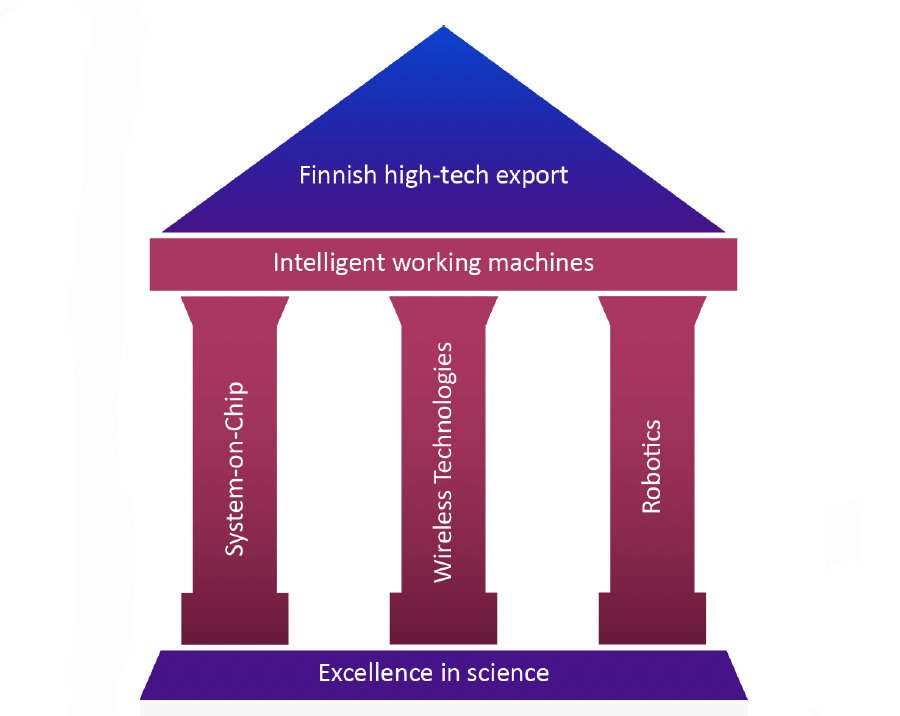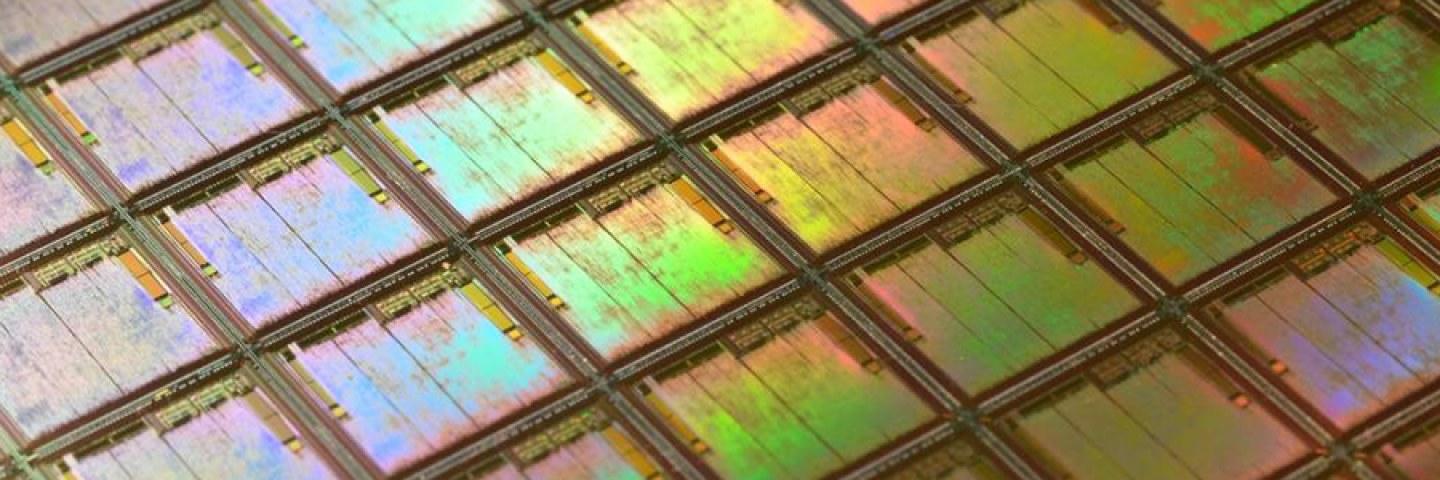This profiling area concentrates on creating new communication and sensor technology and the corresponding advanced SoCs, with specific emphasis on the intelligent mobile working machine.
Our aim is to make future machines increasingly autonomous, energy-efficient, cost-efficient, and safe. Working machines are typically large and complex, work in harsh environment, consume considerable resources such as energy and operator attention, move and manipulate material, and this sets them apart from the road self-driving car industry. These features thus provide unique requirements and research questions for the Silicon-to-Action theme. Examples of these are the powerful but energy-efficient local and distributed computation, as well as novel reliable and low latency wireless communications that replace expensive and high-maintenance wired buses, the efficient creation of digital models from on-board sensors and real-time decision making for automation and safety.
Background
Working machines help us build our homes, produce our food, transport our goods, and excavate our mines. Pressing concerns as an aging population as well as emission emphasise the need for increasingly intelligent and automated working machines.

As illustrated in Figure, Robotics, System-on-Chip (SoC), and Wireless Technologies constitutes the key pillars for building green, safe, digitalised and automated machines and processes. These are among the core technologies for Working Machines and Manufacturing, counted in the roadmap set by Sustainable Industry X (SIX) -- a national initiative supercharging Finnish industry performance and sustainable growth through innovation and knowledge.
SoCs have become an exceeding critical asset in society, and the ten biggest technology companies in the world have their own SoCs (such as Google, Tesla, Meta, and Amazon) that have not been in the chip business before. Their strategy is to control everything from silicon to the web. The security and control of the technology supply chain drive the new SoC adopters. Furthermore, the EU is lagging behind Asia and the US, for which reason the EU will strengthen the self-support of the continent. IC manufacturing companies will invest tens of billions of euros in the next ten years. The EUʼs Chips Act aims at increasing European chip manufacturing from 10% to 20% of the world market by 2030. Furthermore, the basis for all digitalisation activities and all of modern society is efficient, and reliable communications. The EUʼs Digital Compass aims at 1 Gbps connectivity to 100% of the EU households, and cloud services in business from 26% up to 75% by 2030. Older technologies for automotive and industrial products dominate EU chips. Nokia and Ericsson lead the use of latest technologies (<10 nm) for communications infrastructures.
The worldʼs most intelligent working machines are created in Tampere, with several areas such as mining, ports, and forests constituting between 20–40% of the global market share. With a unique ecosystem of academia and industry, the field has been continuously on the list of strategic areas for Tampere University (including TAU Profi1 and Profi2), while the two biggest employers and taxpayers of City of Tampere (Sandvik, and John Deere) also focus on intelligent machines. TAU has hosted multiple AoF CoEs in this broad area, is currently leading the SoC Hub (sochub.fi), is a key member in the SIX initiative (www.six.fi), and is a strategic partner of the 6G flagship (6Genesis.com) and founding member 6G Finland entity. TAU can clearly differentiate itself from the other Finnish universities in this strategically important area, through its unique synergetic expertise in SoC, wireless technology, and robotics, while providing substantial technology leap for both the mobile network industry and the working machine OEMs, both of which are the key cornerstones of the Finnish high-tech export industry.
This profiling area action continues and extends the earlier Profi1 and Profi2 areas, while it is also highly synergistic to the Imaging Research Platform of Profi6. More information about Profiling areas at Tampere University.



